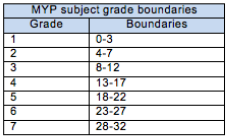Assessment in SLA
There are for main components that are assessed in SLA. They are Listening, Reading, Speaking and Writing. Each of these components is graded individually, i.e when the students are assessed on understanding of written or spoken text, it does not really matter if the spelling is not good as long as the answer is logical and correct.
However, there could be a complex task which could assess all four criteria in one assignment. Considering that the students taking SLA are in the emergent phase or level (in other words beginners), such complex tasks are not required during assessments.
Maximum that students are asked for one assessment is Listening and Reading at the same time. However, more commonly each criterion is assessed during 45-minute period. Assessment of two criteria at the same time is quite time-consuming and students have to be well prepared, therefore they occur exceptionally. The goal of this split of criterial is to allow students to remain focused on one component rather than exposing them to a stressful time pressure.
Maximum grade that student can achieve in each component is 8

Criteria consist of strands which have to be assessed at least twice during the academic year.
An overview what is assessed in each criterion is below:
Criterion A Listening
- identify explicit and implicit information (facts and/or opinions, and supporting details)in the spoken text or video
- analyse correctness in the spoken text
- analyse connections in the spoken text
Criterion B Reading
- identify explicit and implicit information (facts and/or opinions, and supporting details) in the given text
- analyse correctness in simple texts
- analyse connections in simple texts
Criterion C Speaking
- use a wide range of vocabulary
- use a wide range of grammatical structures generally accurately
- use clear pronunciation and intonation in comprehensible manner
- communicate all or almost all the required information clearly and effectively
Criterion D Writing
- use a wide range of vocabulary
- use a wide range of grammatical structures generally accurately
- organize information effectively and coherently in an appropriate format using a wide range of simple and some complex cohesive devices
- communicate all or almost all the required information with a clear sense of audience and purpose to suit the context.
Design of assessment tasks:
For listening assessments are used spoken samples or videos followed by a set of related questions. For reading assessments are used simple texts coupled with other visual and graphical stimuli that allow for answering of subsequent questions.
Speaking assessments are usually preceded by preparation of spoken presentations that are followed by questions from other students. Very commonly used assessment type is a wordless picture story to which the students should make sentences.
Writing assessment is a grammar in practice exercise, usually consisting of sentence transformations, grammar sentences and fill in taks.
Grades:
Depending on the extent to which the strands are met the following grading applies:
1-2 – limited performance
3-4 – adequate performance
5-6 – substantial performance
7-8 – excellent performance
Not all strands have to be covered in one particular assessement, i.e in listening assessment it is ok to assess one strand only. However, the other two will have to be assessed in ensuing listening assessments so that all 3 could be assessed at least twice in the academic year.
In the emergent phase the grades tend to be a little better than in capable and proficient phases since the demands put on beginners are more relaxed.
The overall grade is made of all 4 criteria grades added together and follows the scale below:




